Understanding the Keltner Channel Formula involves components like EMA and ATR to determine trading boundaries. Centerline EMA sets the trend, while upper and lower channel lines use ATR to gauge volatility. Adjusting multiplier values impacts band width and price sensitivity. By grasping these calculations, traders can establish effective entry and exit points. This formula's adaptability to market conditions enhances decision-making. Embracing the nuances of these calculations can empower traders to navigate the markets more strategically.
Understanding the Keltner Channel Formula
The Keltner Channel Formula, a technical analysis tool utilized in trading decisions, comprises a centerline, an upper channel line, and a lower channel line, each serving distinct purposes in identifying trends and potential entry or exit points.
The centerline, usually an exponential moving average (EMA), acts as a reference point for trend identification.
The upper channel line is calculated by adding a multiplier of the average true range (ATR) to the centerline, providing insight into potential overbought levels.
Conversely, the lower channel line is determined by subtracting a multiplier of the ATR from the centerline, aiding in the identification of potential oversold conditions.
The choice of periods for the EMA, ATR, and multiplier value is critical in accurately computing the Keltner Channel Formula.
Key Components of the Formula
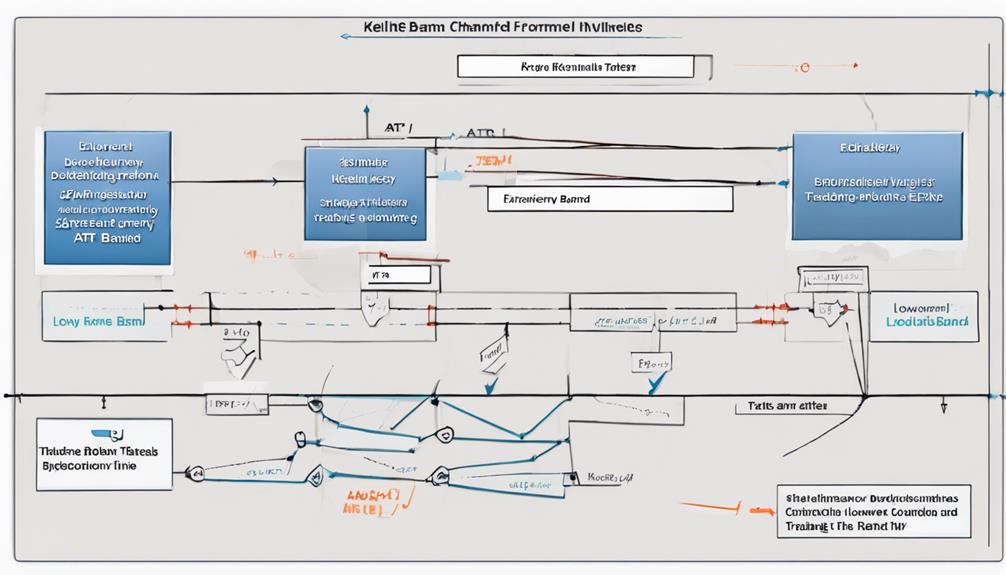
The key components of the Keltner Channel formula consist of the centerline, upper channel line, and lower channel line, each serving specific functions in analyzing price movements.
Traders rely on the exponential moving average (EMA) for the centerline to smooth out price fluctuations, while the upper and lower channel lines incorporate multiples of the average true range (ATR) to establish boundaries for potential price movements.
Understanding these components is essential for traders to apply the Keltner Channel formula effectively in their trading decisions.
Components of Formula
Key components of the Keltner Channel formula include a central line calculated using an exponential moving average (EMA), an upper channel line derived by adding a multiple of the Average True Range (ATR) to the central line, and a lower channel line determined by subtracting a multiple of the ATR from the central line.
The central line, typically an EMA with a specific period, serves as a reference point for the security's price trend. The upper channel line, created by adding a multiplier of ATR to the central line, indicates potential resistance levels. Conversely, the lower channel line, established by subtracting a multiple of the ATR from the central line, suggests possible support levels.
Adjusting the multiplier can alter the channel's width, accommodating different market conditions and trading strategies.
Application in Trading
Utilizing the Keltner Channel formula in trading involves applying an exponential moving average (EMA) as a central line for trend identification and incorporating the average true range (ATR) multiplied by a chosen factor to establish upper and lower channel boundaries. This technical tool aids traders in making informed decisions based on price movements and volatility levels.
Key components of the formula include:
- Selecting a 20-period EMA and a multiplier value to determine the channel width.
- Calculating the upper band as EMA + (ATR x multiplier) and the lower band as EMA – (ATR x multiplier).
- Combining EMA and ATR to gauge market volatility and identify potential trade entry points effectively.
Calculating the Centerline EMA
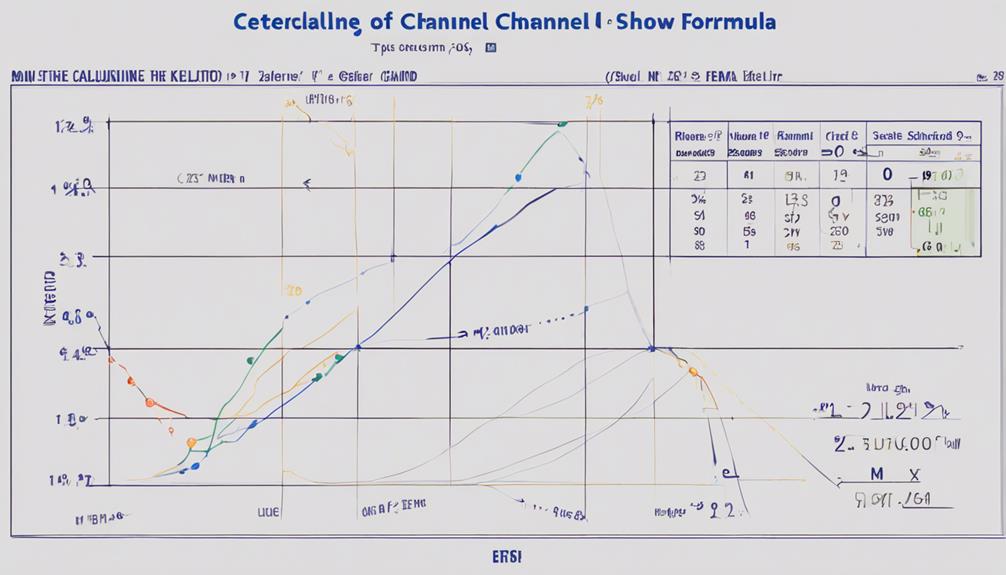
For calculating the Centerline EMA of the Keltner Channel, traders often rely on Exponential Moving Averages (EMA) due to their ability to provide a smoother representation of price movements compared to simple moving averages.
The centerline, derived from the EMA, plays an important role in identifying the average price trend within the Keltner Channel. Traders can adjust the responsiveness of the centerline by selecting different EMA periods; shorter periods result in a more sensitive indicator to recent price changes, while longer periods offer a more stable but lagging reference point.
Common choices for EMA periods when calculating the centerline of the Keltner Channel are 10 or 20, depending on the trader's preference for responsiveness or smoothness.
Deriving the Upper Channel Line
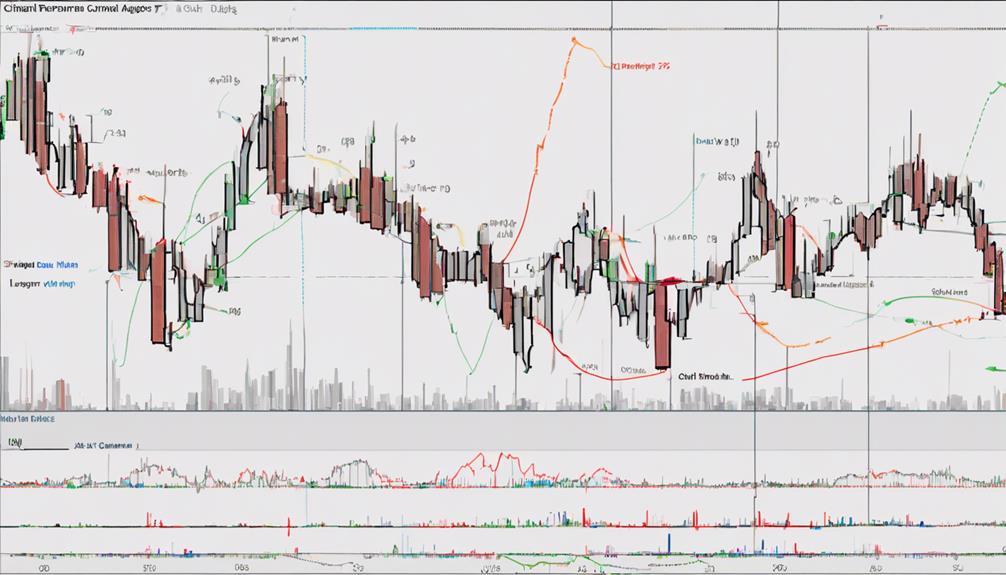
Building upon the calculation of the Centerline EMA, the derivation of the Upper Channel Line in the Keltner Channel involves adding the Average True Range (ATR) multiplied by a chosen factor to the Exponential Moving Average (EMA).
This upper channel line serves as a boundary indicating potential overbought conditions when prices touch or exceed it. Here are some key points worth noting:
- The multiplier determines the width of the channel and can be adjusted based on market volatility.
- Traders often look for price action near the upper channel line to assess potential resistance levels and anticipate reversals.
- Understanding how the upper channel line is derived helps traders make informed decisions about entry and exit points in their trading strategies.
Determining the Lower Channel Line
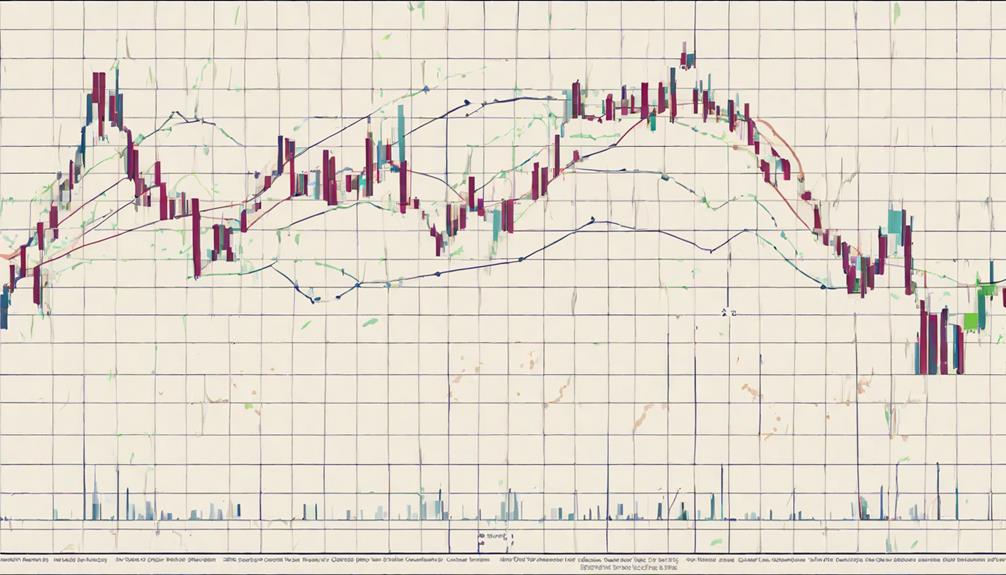
When determining the lower channel line in the Keltner Channel, it is vital to take into account the key factors influencing its calculation.
The lower channel line is derived by subtracting a multiple of the average true range (ATR) from the exponential moving average (EMA), impacting the support level dynamics within the channel.
Understanding the relationship between the ATR multiplier and the resulting distance from the EMA is essential for traders in setting effective stop-loss orders and identifying potential market reversals.
Lower Channel Calculation
The calculation of the lower channel line in the Keltner Channel involves subtracting a multiple of the Average True Range (ATR) from the Exponential Moving Average (EMA). This process helps determine the lower boundary of the channel, which is crucial for identifying potential support levels and entry points for traders. Understanding how this lower channel line is derived enables traders to make informed decisions regarding stop-loss levels and risk assessment in their trading strategies.
- Emotional Impact
- Provides a sense of security in identifying support levels.
- Enhances confidence in pinpointing potential entry opportunities.
- Empowers traders to make calculated risk assessments for trading decisions.
Key Factors Influencing
Factors influencing the determination of the lower channel line in the Keltner Channel play a critical role in shaping traders' decision-making processes in the financial markets. The Average True Range (ATR) multiplier chosen greatly impacts the width of the lower channel line, affecting the frequency of price touches and potential trading opportunities.
A lower ATR multiplier results in a narrower lower channel line, potentially leading to fewer instances where the price touches this level. Traders can adjust this multiplier based on their risk tolerance levels, with a narrower channel line indicating lower risk tolerance and vice versa.
The lower channel line also acts as a dynamic support level, signaling potential buying opportunities when prices approach or touch this line, aiding traders in making well-informed trading decisions.
Selecting Periods for EMA and ATR
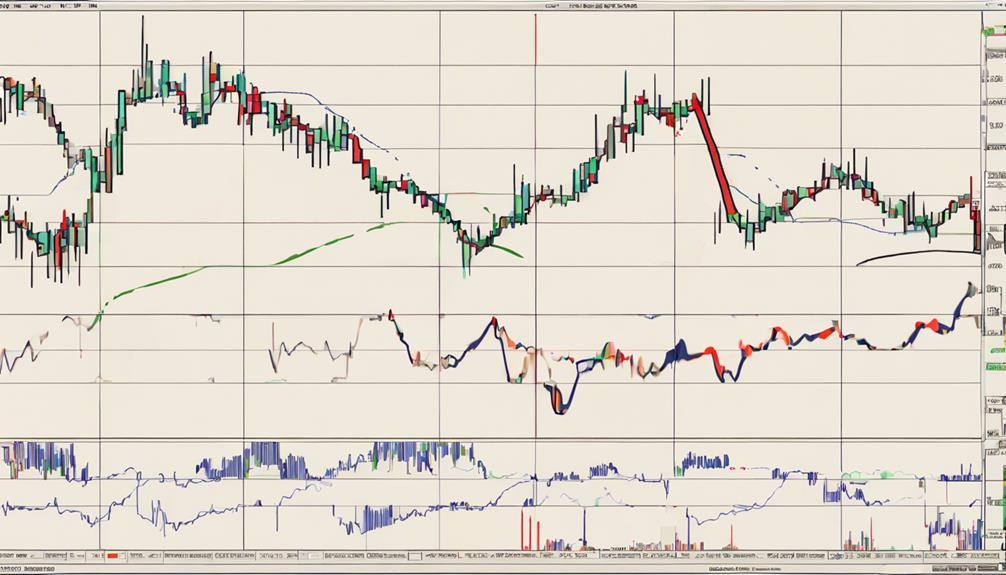
In determining the periods for the Exponential Moving Average (EMA) and Average True Range (ATR) within the Keltner Channel formula, traders must carefully consider the timeframe of their analysis to align with their trading strategies and risk management approach.
When selecting periods for EMA and ATR, traders should consider the following:
- Trading Strategies: The choice of EMA and ATR periods should be in line with the trader's specific trading strategies, whether they focus on short-term price movements or long-term trends.
- Risk Management: Adjusting the periods of EMA and ATR can impact risk management by influencing the sensitivity of the trading signals generated.
- Market Conditions: Adapting the periods based on current market conditions can help traders capture changing volatility levels and adapt to different asset classes effectively.
Choosing the Multiplier Value
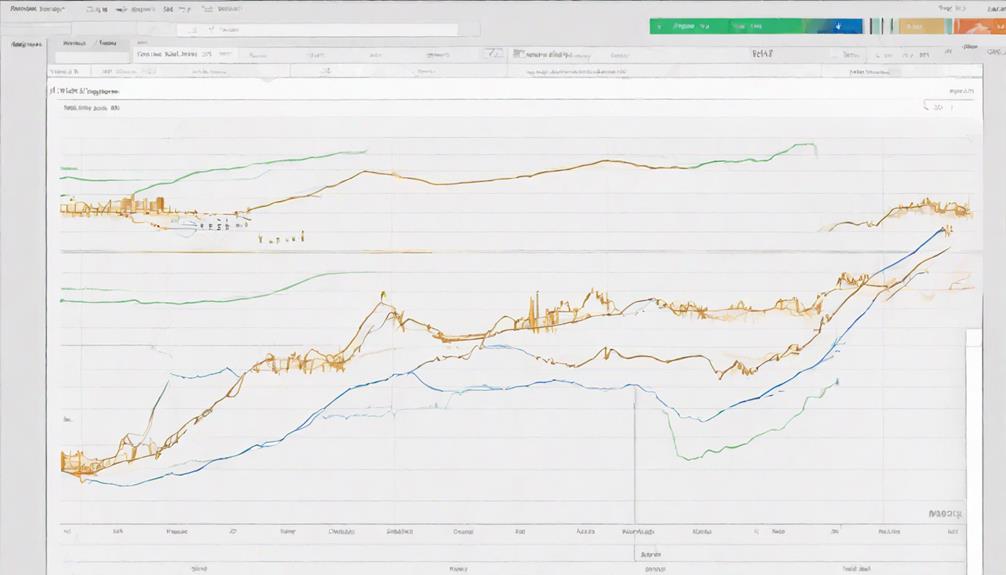
When determining the multiplier value in the Keltner Channel formula, traders must carefully assess its impact on the channel width and sensitivity to price movements. The multiplier plays an important role in determining how wide or narrow the channel bands will be and how quickly they adjust to price changes. A higher multiplier value results in wider bands, providing more flexibility for price fluctuations, while a lower multiplier leads to narrower bands, indicating less tolerance for price variations within the channel. Traders often experiment with different multiplier values to find the best setting that aligns with their trading strategy and risk appetite. Adjusting the multiplier can notably influence the frequency of signals generated by the Keltner Channel, impacting the number of trade opportunities available.
| Multiplier Value | Effect on Channel Width | Effect on Sensitivity to Price Movements |
|---|---|---|
| High | Wider bands | Lower sensitivity |
| Low | Narrower bands | Higher sensitivity |
Establishing Support and Resistance Levels
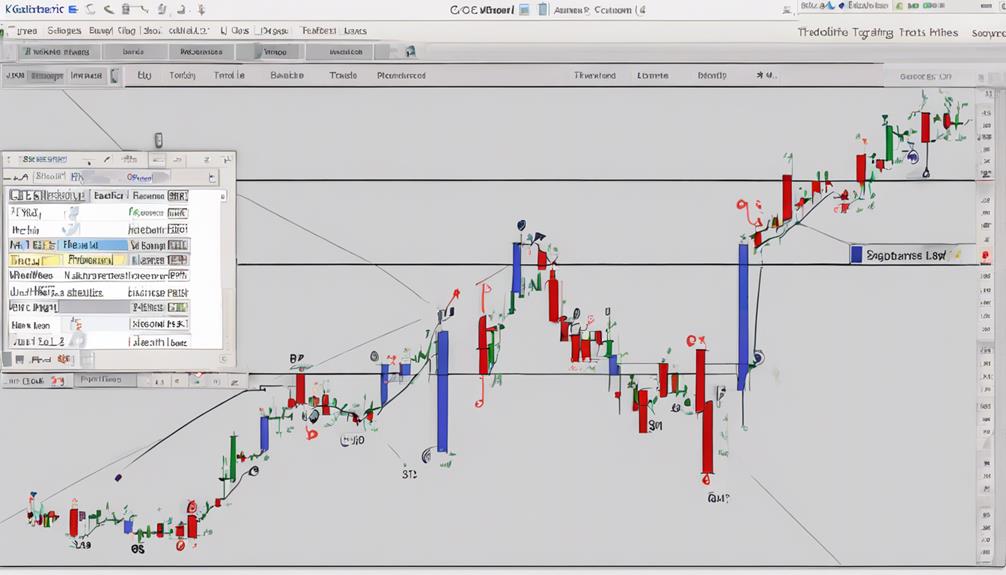
The establishment of support and resistance levels within the Keltner Channel is pivotal for guiding traders in identifying key reversal points and potential price consolidation areas. These levels serve as critical boundaries that help in understanding market dynamics and making informed trading decisions.
To emphasize their importance:
- Support and resistance levels act as invisible barriers that influence price movements, creating strategic entry and exit points for traders.
- The adaptive nature of these levels within the Keltner Channel allows for real-time adjustments based on market volatility, enhancing decision-making precision.
- Establishing clear support and resistance levels enables traders to better interpret market sentiment and anticipate potential trend reversals, leading to more effective risk management strategies.
Importance of Market Volatility
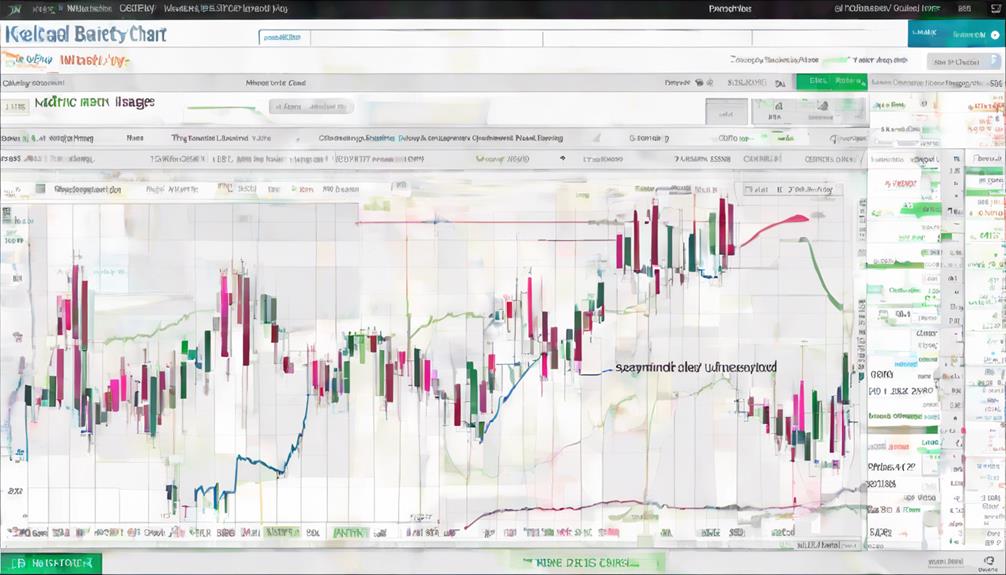
Analyzing market volatility plays a significant role in shaping the width of Keltner Channels and guiding traders in adapting their strategies effectively. Market volatility directly influences the width of the channel bands within the Keltner Channels. During periods of high volatility, the channel bands widen, reflecting increased price fluctuations and market uncertainty. Conversely, low volatility leads to narrower channel bands, indicating reduced price movements and a more stable market environment.
Understanding the impact of market volatility is essential for traders looking to adjust their trading strategies accordingly. High volatility may necessitate a more cautious approach, with wider stop-loss orders to account for larger price swings. On the other hand, low volatility might require traders to be more patient and selective in their trades, as the potential for significant price movements diminishes.
Furthermore, monitoring market volatility levels enables traders to interpret Keltner Channel signals more effectively. By considering the prevailing volatility conditions, traders can better gauge the significance of price movements within the channel bands and make informed trading decisions based on these insights.
Enhancing Trading Decisions With the Formula
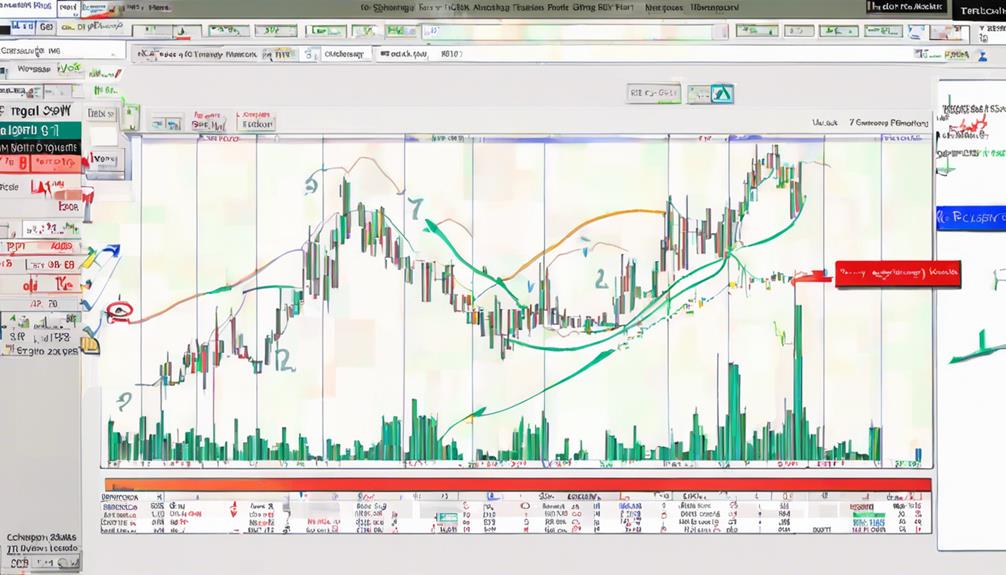
Utilizing the Keltner Channel formula enhances traders' ability to make informed decisions by integrating exponential moving averages (EMA) with average true range (ATR) to establish dynamic support and resistance levels. This integration allows traders to adapt to changing market conditions and volatility effectively.
Key points to contemplate include:
- Dynamic Support and Resistance: The Keltner Channel formula provides traders with dynamic support and resistance levels that adjust based on market volatility, offering insights into potential price reversal points.
- Customizable Sensitivity: Traders can customize the sensitivity of the Keltner Channel by adjusting the ATR multiplier, allowing for a tailored approach to different market environments.
- Market Volatility Influence: ATR, a component of the Keltner Channel formula, helps measure market volatility, impacting the width of the channel bands and signaling periods of high or low volatility.
Practical Application in Trading
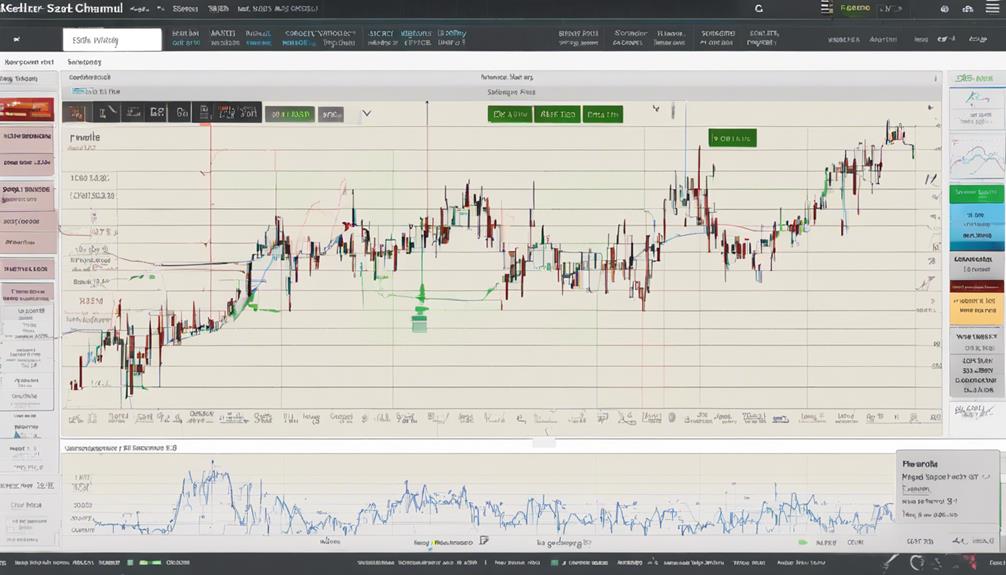
Incorporating the Keltner Channel formula into trading strategies offers a practical approach to identifying potential entry and exit points based on dynamic channel boundaries. By utilizing the dynamic upper and lower channel lines calculated using the formula, traders can assess market volatility and make well-informed trading decisions.
This practical application of the Keltner Channel formula allows traders to adapt to changing market conditions effectively. Through the combination of the exponential moving average (EMA) and the average true range (ATR), the Keltner Channel provides traders with a tool to gauge price movements within the channel and customize parameters to align with their specific trading strategies.
Understanding how to apply the Keltner Channel formula in trading can significantly enhance precision in decision-making and improve overall trading performance. By leveraging the insights derived from the formula, traders can navigate the complexities of the financial markets with more confidence and accuracy.
Fine-Tuning the Formula for Accuracy
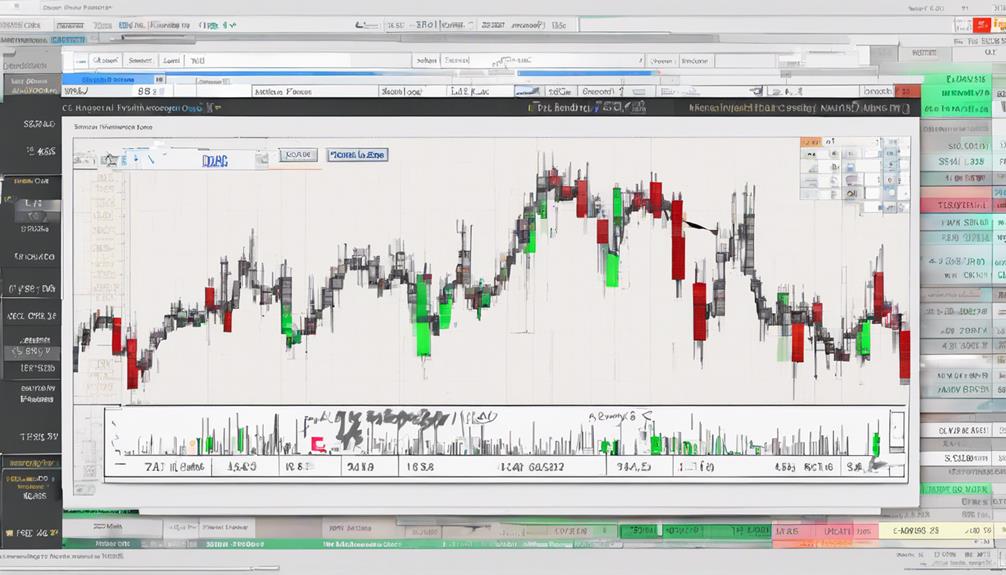
Fine-tuning the Keltner Channel formula involves adjusting calculation parameters to optimize for accuracy in trading decisions. Testing different input values, such as the multiplier, EMA period, and ATR period, allows traders to fine-tune the formula for specific market conditions.
Adjusting Calculation Parameters
Adjusting the calculation parameters of the Keltner Channel formula plays a vital role in optimizing its responsiveness to market conditions and enhancing the accuracy of trading signals. Fine-tuning the EMA period can affect how quickly the channel reacts to price changes, while adjusting the ATR multiplier impacts the width of the channel bands, influencing signal precision. By customizing these parameters, traders can better adapt the Keltner Channel to varying market conditions, improving its effectiveness in generating actionable trading signals.
Experimenting with different settings allows for customization based on trading preferences.
Essential parameter selection is critical for maximizing the effectiveness of the Keltner Channel.
Modifying parameters can help traders adapt to changing market conditions efficiently.
Testing Different Input Values
Exploring various input values in the Keltner Channel formula allows traders to refine its accuracy and responsiveness to market dynamics. Adjusting the EMA period can influence sensitivity to price movements, while testing different ATR multiplier values fine-tunes the channel's width and responsiveness. Tweaking the ATR calculation method, possibly by using diverse timeframes, can modify the volatility measure within the Keltner Channel.
Optimizing for Market Conditions
To enhance the Keltner Channel formula's accuracy in trading decisions, optimizing for market conditions involves strategically calibrating input values to align with current asset dynamics and trading objectives.
Adjusting the EMA period can optimize sensitivity to short-term price changes, while modifying the ATR multiplier impacts the width of the channel, reflecting market volatility.
Fine-tuning the formula for accuracy involves balancing responsiveness and smoothness, adapting the multiplier based on asset characteristics to enhance signal reliability.
Maximizing Profit Potential
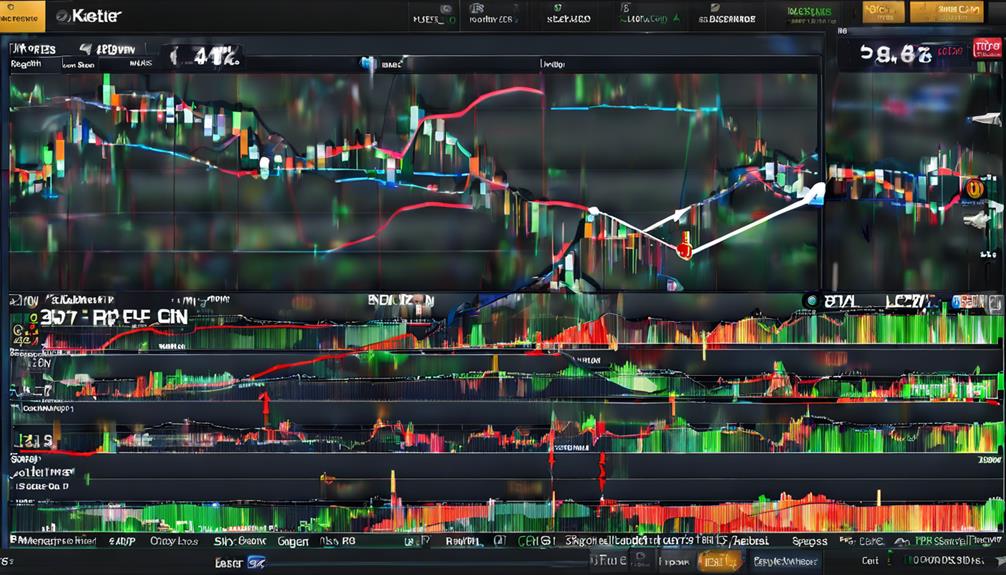
To optimize trading strategies with the Keltner Channel formula, traders must focus on strategically maximizing profit potential through precise entry and exit points. By utilizing the ATR multiplier in the Keltner Channel formula, traders can adjust the width of the channel to adapt to varying levels of market volatility. This customization enables traders to identify key support and resistance levels, which are essential for making informed trading decisions. Establishing these levels allows traders to pinpoint potential breakout opportunities and trend reversals, enhancing the ability to capitalize on market movements effectively.
| Key Points | Description |
|---|---|
| Customizable Width | Adjust the ATR multiplier to customize the width of the Keltner Channel. |
| Support & Resistance | Utilize the formula to identify pivotal levels for making strategic decisions. |
| Breakout Opportunities | Identify potential breakout points using the Keltner Channel formula. |
| Market Volatility | Assess market volatility and adjust trading strategies accordingly. |
Frequently Asked Questions
How Do You Calculate the Keltner Channel?
To calculate the Keltner Channel, one must utilize historical price data to derive the upper and lower boundaries around an exponential moving average (EMA).
This method aids in volatility analysis, trend identification, and spotting potential entry points.
What Is the Best Setting for the Keltner Channel?
In determining the best setting for the Keltner Channel, traders seek ideal parameters through custom settings that align with their strategies. Backtesting results can validate the effectiveness of chosen configurations.
Real-time adjustments are essential to adapt to evolving market conditions, ensuring the indicator's sensitivity to price movements and signal accuracy.
Balancing the need for accurate trend identification with the risk of false signals remains pivotal in achieving trading success.
Is Keltner Channel Strategy Profitable?
Profitability analysis of the Keltner Channel strategy reveals its potential when combined with backtesting results and sound risk management practices.
Adapting to varying market conditions and employing effective trade execution techniques are key factors in maximizing profitability.
Monitoring the strategy's performance and making real-time adjustments based on market data play crucial roles in enhancing overall profitability.
Proper implementation and continuous refinement can lead to successful outcomes with the Keltner Channel strategy.
What Is the Keltner Channel Indicator Strategy?
The Keltner Channel indicator strategy is a valuable tool for traders seeking entry signals, volatility measurement, trend identification, risk management, and stop-loss placement.
By utilizing a combination of an exponential moving average and the average true range, this strategy helps traders identify dynamic support and resistance levels.
Monitoring price movement within the Keltner Channel boundaries allows for the identification of potential breakout opportunities and reversal points based on market volatility and price action.
Conclusion
In the domain of trading, the Keltner Channel Formula acts as a guiding light, illuminating potential opportunities with precision and clarity.
Like a skilled craftsman honing his tools, traders can harness the power of this formula to carve out profits in the market.
By understanding its key components and fine-tuning its calculations, traders can navigate the turbulent waters of the market with confidence and skill, maximizing their profit potential along the way.


